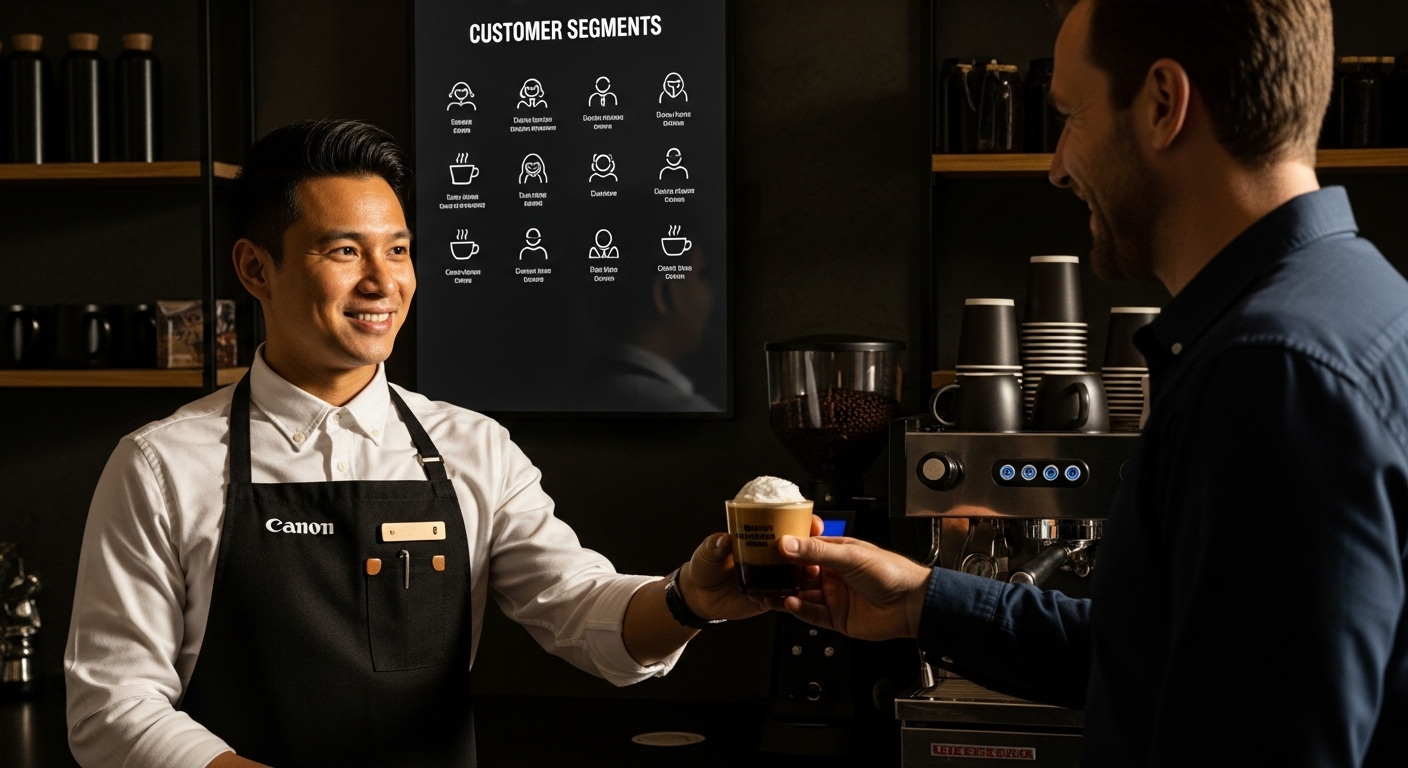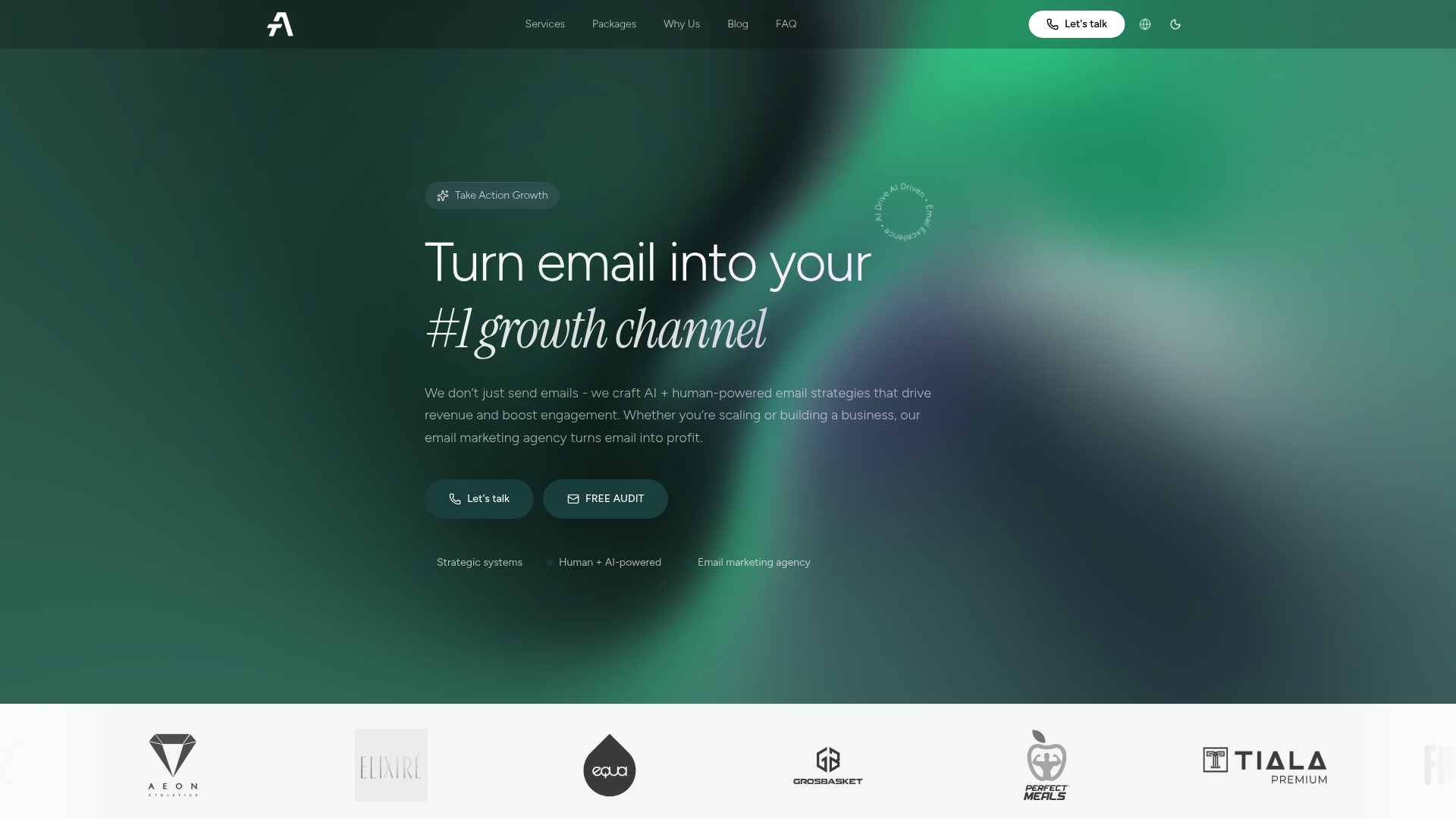What is Audience Segmentation? Understanding Its Importance
Audience segmentation is changing how businesses talk to their customers. Companies that use this strategy can deliver marketing messages with pinpoint accuracy and speak to what makes each customer tick. What might surprise you is that Netflix, Spotify, and Amazon all rely on audience segmentation to personalize every single user experience. Most people assume segmentation is just about age or location, but it turns out the most powerful results come from digging deeper into behaviors, habits, and even device use. The difference can mean going from being ignored to creating loyal fans who keep coming back.
Table of Contents
- Defining Audience Segmentation And Its Key Concepts
- The Importance Of Audience Segmentation For Businesses
- How Audience Segmentation Works In E-Commerce
- Types Of Audience Segmentation And Their Applications
- Real-World Examples Of Successful Audience Segmentation
Quick Summary
| Takeaway | Explanation |
|---|---|
| Audience segmentation enhances marketing precision. | This strategy allows businesses to create tailored communication strategies for different customer groups. |
| Measurable and reachable segments are essential. | Effective segmentation must include quantifiable and accessible groups to justify targeted marketing efforts. |
| Personalized experiences boost customer loyalty. | Tailoring messaging to specific customer needs increases engagement and fosters brand loyalty. |
| Data-driven approaches improve targeting. | Collecting extensive customer data enables more accurate segmentation and better marketing strategies. |
| Diverse segmentation types yield richer insights. | Combining demographic, psychographic, and behavioral segmentation provides deeper understanding of customer motivations. |
Defining Audience Segmentation and Its Key Concepts
Audience segmentation is a sophisticated marketing strategy that transforms how businesses understand and engage with their customer base. Instead of treating all customers identically, this approach recognizes that each customer group has unique characteristics, preferences, and behaviors that require tailored communication and targeting.
What Exactly is Audience Segmentation?
At its core, audience segmentation is the process of dividing a broad target market into distinct subgroups or segments based on specific shared attributes. These attributes can range from demographic factors like age and income to more nuanced characteristics such as purchasing behaviors, lifestyle choices, and psychological profiles.
According to research from the National Institutes of Health, audience segmentation allows organizations to create more precise and effective communication strategies by understanding the unique needs of different population groups.
Key Characteristics of Effective Audience Segmentation
Successful audience segmentation relies on several critical components:
- Measurability: The segment must be quantifiable and identifiable
- Accessibility: The segment should be reachable through specific marketing channels
- Substantiality: The segment must be large enough to justify targeted marketing efforts
- Differentiability: Each segment should have distinct characteristics that set it apart from others
By breaking down a broader audience into these carefully defined segments, businesses can develop more personalized marketing approaches. This strategy enables brands to craft messages that resonate deeply with specific customer groups, ultimately improving engagement, conversion rates, and customer loyalty.
The power of audience segmentation lies in its ability to transform generic marketing into a targeted, precision-driven approach. Rather than casting a wide net, businesses can now fish with specific lures designed to attract exactly the type of customer they want to reach.
The Importance of Audience Segmentation for Businesses
Audience segmentation transcends traditional marketing approaches by providing businesses with a strategic framework to understand, target, and engage customers with unprecedented precision. By recognizing that not all customers are identical, organizations can develop more nuanced, effective marketing strategies that drive meaningful business results.
Why Businesses Need Audience Segmentation
In today’s competitive marketplace, generic marketing messages are increasingly ineffective. Customers expect personalized experiences that speak directly to their unique needs, preferences, and pain points. Marketing automation strategies have evolved to leverage audience segmentation as a critical tool for creating targeted, resonant communication.
According to research from the National Institutes of Health, organizations that implement sophisticated audience segmentation can dramatically improve their communication effectiveness and intervention precision.
Key Business Benefits of Strategic Segmentation
Businesses implementing robust audience segmentation strategies gain multiple competitive advantages:
- Enhanced Customer Understanding: Deep insights into customer behaviors and motivations
- Improved Marketing Efficiency: More targeted spending with higher return on investment
- Personalized Customer Experiences: Tailored messaging that increases engagement and loyalty
- Better Product Development: Identifying specific customer needs drives innovation
By breaking down broad market populations into manageable, well-defined segments, businesses can craft laser-focused marketing strategies. This approach allows companies to allocate resources more effectively, develop more compelling product offerings, and create communication strategies that genuinely resonate with specific customer groups.
The true power of audience segmentation lies in its ability to transform generic marketing approaches into precision-driven, customer-centric strategies that speak directly to individual customer needs and preferences.
How Audience Segmentation Works in E-commerce
E-commerce businesses operate in a dynamic digital landscape where understanding customer nuances can make the difference between success and stagnation. Audience segmentation provides a powerful mechanism for online retailers to decode complex customer behaviors and create targeted, personalized shopping experiences.
Data Collection and Customer Profiling
The foundation of e-commerce audience segmentation lies in comprehensive data collection. Online businesses gather insights through multiple touchpoints such as website interactions, purchase history, browsing behavior, demographic information, and customer preferences. Ways to increase online sales often leverage these detailed customer profiles to drive more strategic marketing efforts.
According to research published in digital commerce studies, effective segmentation transforms raw data into actionable customer insights that can significantly improve targeting and conversion rates.
Practical Segmentation Strategies in Online Retail
Successful e-commerce audience segmentation typically involves categorizing customers based on several key dimensions:
- Behavioral Segmentation: Analyzing purchasing frequency, average order value, and product preferences
- Demographic Segmentation: Grouping customers by age, gender, income, location
- Psychographic Segmentation: Understanding lifestyle, interests, values, and attitudes
- Technological Segmentation: Identifying device usage, platform preferences, digital engagement levels
By implementing these sophisticated segmentation strategies, e-commerce businesses can create highly personalized experiences. This might involve customized product recommendations, targeted email campaigns, dynamic pricing, or individualized promotional offers that resonate with specific customer groups.
The ultimate goal of audience segmentation in e-commerce is to transform generic online shopping experiences into intelligent, responsive interactions that feel uniquely tailored to each customer’s needs and preferences.
Types of Audience Segmentation and Their Applications
Audience segmentation is a multifaceted approach that enables businesses to dissect their target market into meaningful groups. Understanding the various types of segmentation allows organizations to craft more precise, impactful marketing strategies that speak directly to specific customer needs and characteristics.
Core Segmentation Categories
Companies can leverage multiple segmentation approaches to gain deeper insights into their customer base. Personalized email campaigns often rely on these sophisticated segmentation techniques to enhance communication effectiveness.
According to research in communication strategies, effective audience segmentation encompasses several fundamental categories that help businesses understand their customers more comprehensively.
Comprehensive Segmentation Types
Businesses can employ multiple segmentation strategies to create nuanced customer profiles:
- Demographic Segmentation: Categorizing audiences by age, gender, income, education, occupation
- Geographic Segmentation: Dividing markets based on location, region, climate, population density
- Psychographic Segmentation: Analyzing lifestyle, personality traits, values, interests, attitudes
- Behavioral Segmentation: Examining purchasing patterns, brand interactions, product usage, customer loyalty
- Technographic Segmentation: Understanding technology usage, device preferences, digital engagement levels
Each segmentation type offers unique insights that help businesses tailor their approach.
![]() Demographic segmentation provides basic structural insights, while psychographic segmentation delves into the emotional and psychological drivers behind customer behavior. Behavioral segmentation reveals how customers interact with products and services, enabling more targeted marketing efforts.
Demographic segmentation provides basic structural insights, while psychographic segmentation delves into the emotional and psychological drivers behind customer behavior. Behavioral segmentation reveals how customers interact with products and services, enabling more targeted marketing efforts.
The ultimate goal of these segmentation strategies is to transform broad market understanding into precise, actionable customer intelligence that drives more effective business decisions and personalized customer experiences.
The following table summarizes the main types of audience segmentation discussed in the article and outlines what each type focuses on for more effective targeting.
| Segmentation Type | Focus Area | Example Insights Gathered |
|---|---|---|
| Demographic | Age, gender, income, education, occupation | Customer age ranges, income brackets |
| Geographic | Location, region, climate, population density | Urban vs. rural shoppers, regional preferences |
| Psychographic | Lifestyle, personality traits, values, interests, attitudes | Eco-friendly values, trendsetting lifestyles |
| Behavioral | Purchasing patterns, brand interactions, product usage, loyalty | Frequency of purchases, response to promotions |
| Technographic | Technology usage, device preferences, digital engagement levels | Mobile device use, app vs. desktop shoppers |
Real-world Examples of Successful Audience Segmentation
Audience segmentation is not just a theoretical concept but a powerful strategy that has transformed marketing approaches across various industries. By understanding and implementing targeted segmentation techniques, businesses can create more meaningful connections with their customers and drive significant growth.
Strategic Segmentation in Different Industries
Successful organizations leverage audience segmentation to deliver personalized experiences that resonate with specific customer groups. Lead generation techniques often rely on these nuanced approaches to identify and engage potential customers more effectively.
According to research on communication interventions, targeted segmentation strategies can dramatically improve engagement and behavior change across diverse sectors.
Compelling Segmentation Success Stories
Business case studies demonstrate the transformative power of sophisticated audience segmentation:
- Netflix: Recommends content based on viewing history, genre preferences, and watching patterns
- Spotify: Creates personalized playlists using listening habits, mood, and music genre preferences
- Amazon: Provides customized product recommendations based on purchase history and browsing behavior
- Starbucks: Offers personalized rewards and promotions through their mobile app, segmenting customers by purchasing frequency and preferences
- Nike: Develops targeted marketing campaigns based on fitness levels, athletic interests, and product usage
These examples illustrate how advanced segmentation goes beyond simple demographic categorization.
 By analyzing complex behavioral patterns, preferences, and interactions, businesses can create highly targeted experiences that feel individually crafted for each customer.
By analyzing complex behavioral patterns, preferences, and interactions, businesses can create highly targeted experiences that feel individually crafted for each customer.
The true power of audience segmentation lies in its ability to transform generic marketing approaches into intelligent, responsive strategies that anticipate and meet individual customer needs with remarkable precision.
This table presents key examples of companies using audience segmentation and shows the primary method or approach each uses to personalize customer experiences.
| Company | Segmentation Approach | Personalization Example |
|---|---|---|
| Netflix | Viewing history, genre preferences, watching patterns | Tailored movie/show recommendations |
| Spotify | Listening habits, mood, music genre preferences | Personalized playlists and mix suggestions |
| Amazon | Purchase history, browsing behavior | Custom product recommendations |
| Starbucks | Purchasing frequency, individual preferences | Personalized app rewards and promotions |
| Nike | Fitness levels, athletic interests, product usage | Targeted marketing and product launches |
Turn Precision Audience Segmentation Into Real Email Growth
Struggling to make your marketing speak directly to real customer needs? You just learned how audience segmentation unlocks tailored messaging and higher engagement, yet putting theory into practice in a crowded inbox is tough. Many brands waste time spraying generic emails, missing the chance to build loyalty and boost conversions with precision. Take Action specializes in transforming segmentation knowledge into powerful email strategies that deliver real revenue. Our approach leverages deep data, strategic automation, and Klaviyo expertise, turning raw customer insight into increased open rates, more clicks, and consistent brand growth.

Ready to make audience segmentation work for your ecommerce business right now? Discover how our email marketing automation solutions can recover abandoned carts, scale retention, and amplify every segment with messages that feel truly personal. Take the next step—visit Take Action to start scaling revenue with campaigns built for your unique audience. Act today and move beyond generic outreach to campaign strategies that keep your customers coming back.
Frequently Asked Questions
What is the definition of audience segmentation?
Audience segmentation is the process of dividing a broad target market into distinct subgroups based on shared attributes, such as demographics, behaviors, and preferences. This approach enables businesses to tailor their marketing strategies more effectively.
Why is audience segmentation important for businesses?
Audience segmentation is crucial because it allows businesses to create personalized marketing messages that resonate with specific customer groups, improving engagement, conversion rates, and ultimately customer loyalty.
What are the key components of effective audience segmentation?
The key components of effective audience segmentation include measurability, accessibility, substantiality, and differentiability, ensuring that each segment is quantifiable, reachable, significant enough for targeted marketing, and has distinct characteristics from other segments.
How can e-commerce businesses utilize audience segmentation?
E-commerce businesses can utilize audience segmentation by collecting data on customer behaviors and preferences to create detailed customer profiles. This enables personalized shopping experiences through targeted promotions, customized recommendations, and tailored communication.
Recommended
- Personalized Email Campaigns: A Growth Guide for 2025 | Take Action Blog | Take Action
- Understanding Marketing Automation Basics for Brands | Take Action Blog | Take Action
- Influencer Marketing Explained: 2025 Guide for Business Growth | Take Action Blog | Take Action
- Understanding Creating Educational Content for Brands | Take Action Blog | Take Action
- How to Effectively Reach Digital Marketing Audiences
